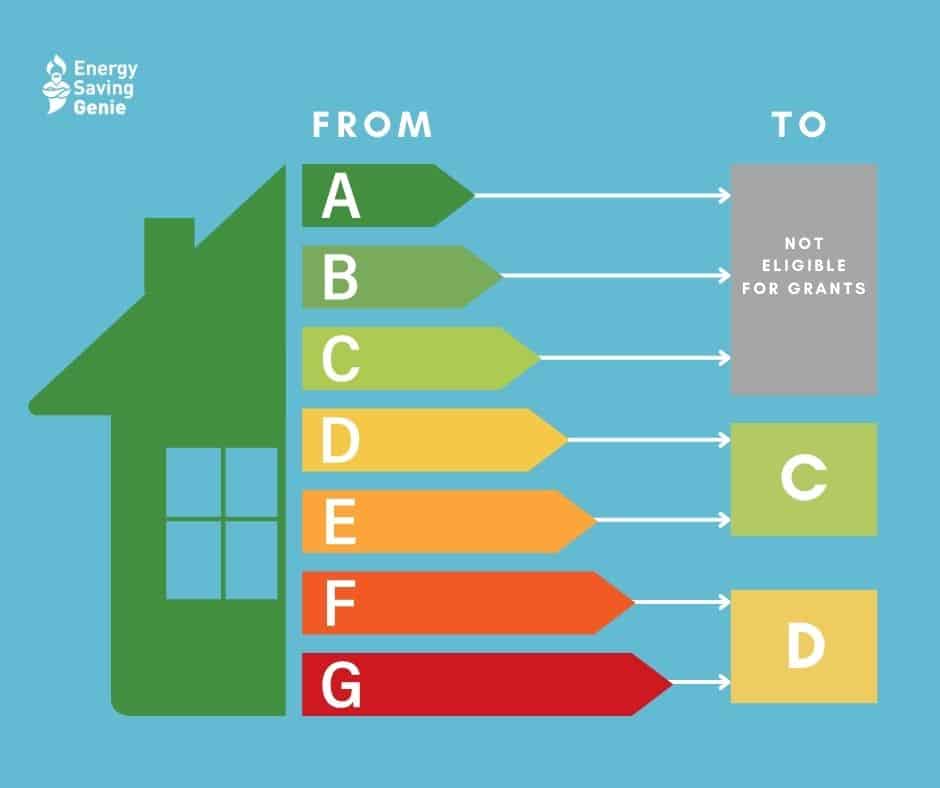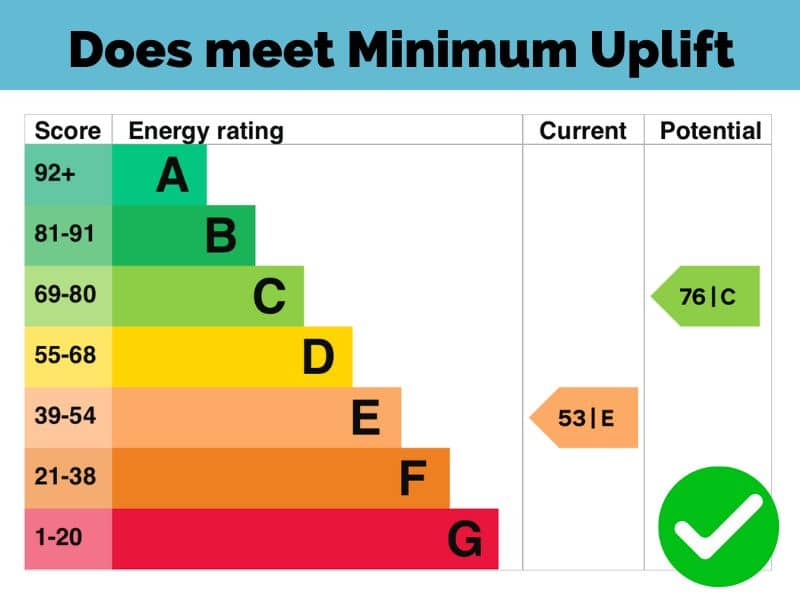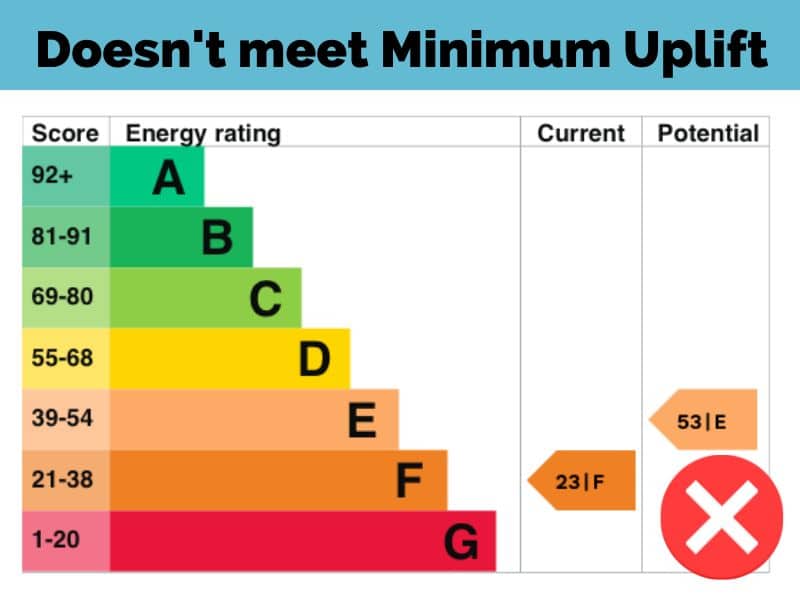If you are thinking that the Government’s ECO4 grants sound too good to be true, you are not alone. It is natural to be skeptical about receiving thousands of pounds worth of free upgrades to your home. Will you qualify? Will your property qualify? There’s quite a few factors to consider and the rules aren’t straightforward.
The good news is that there’s £4 billion of funding available, and for some applicants the grants lead to whole-house improvements such as insulation installation, heating upgrades and renewable energy solutions. However, the bad news is that not all properties will qualify and the rules are hard to understand. For some applicants, when they delve deeper into the rules their property isn’t eligible, even though on first sight they appear to be.
This can lead to disappointment that the application hasn’t been successful, especially if you don’t know why and you don’t know what the next steps are.
Don’t worry, that’s what this article is for.
I will explain the Minimum Uplift rule for ECO4 grants and why you need to know all about it. It is one of the most important contributors to your grant application succeeding. If your property isn’t eligible, understanding this rule can be key to explaining why.
Outline
- What is the Minimum Uplift requirement for ECO4 grant applications?
- Why Should You Care About The Minimum Uplift?
- Minimum Uplift Rules in Context
- 3 Tips for a Successful Grant application
- Summary
What is the Minimum Uplift requirement for ECO4 grant applications?
At its most basic, the Minimum Uplift requirement for ECO4 grants is a rule that dictates that homes have to be upgraded by a minimum amount.
The minimum upgrade for properties with an EPC rating F or G must be improved to at least a band D, and any properties with a starting EPC of D or E must be improved to at least a band C.
Let’s add a little more depth to that— Here are defined Minimum Uplift rules
- D Rated properties must be upgraded to a C
- E Rated properties must be upgraded to a C
- F Rated properties must be upgraded to a D
- G Rated properties must be upgraded to a D

For those subject matter experts among you that would like to delve into the nitty gritty of the rules, you’ll find full details in section 4.2 of Ofgem’s Energy Company Obligation (ECO4) Guidance: Delivery document.
This describes the legislative requirements of the ECO4 Order and the administrative processes that installers have to follow.
If you don’t know what your properties starting EPC rating is or what it can be improved to, you can find out by checking the EPC register (the Energy Saving Genie grant checker also checks your EPC rating if there is an EPC available).
Do you want to know if your property will meet the Minimum Uplift requirement? Check out our free grant checker to see if your property is eligible (it only takes a few seconds).
Why Should You Care About The Minimum Uplift?
The Minimum Uplift is often the biggest reason that seemingly ideal ECO4 grant applications aren’t successful.
The Minimum Uplift in ECO4 is important because:
- Reason #1
The properties EPC rating must be improved by a minimum amount for the application to be accepted by the energy companies - Reason #2
Not all property EPC ratings are correct, so having the minimum uplift checked by a registered installer can make the difference between an application being successful or not. - Reason #3
The scheme is designed to improve the least efficient properties, so if you have a low rated EPC and a home that requires energy efficiency improvements, this can increase your chances of being eligible.
Installers want to install
Installers want to accept your property, they want to help you, BUT they can only work within the rules of the grant scheme (they don’t set the rules).
The truth is, the rules are set by the government and the scheme is administered by Ofgem. Registered Installers fund the installations and only get that funding paid to them after they submit the required paperwork. If the property doesn’t meet all the rules, and if all the evidence isn’t produced, the installer doesn’t get paid.
Minimum Uplift Rules in Context
How the Minimum Uplift affects your application is important to understand, as it could mean the difference between your application being successful or unsuccessful.
Let me give you some real-world examples:
Meet Joe. He lives in a High E rated Semi-detached house. He has an old non-condensing boiler and uninsulated cavity walls. Upgrading the boiler to a condensing boiler and installing loft and wall insulation will increase the energy performance to a High C.
Joe’s property does meet the Minimum Uplift Rules as the properties rating can be improved from an E to a C:

Let’s look at an alternative property that doesn’t qualify.
Meet Claire. She lives in a Low F rated top floor flat and has electric room heaters. Her room-in-roof ceiling is already insulated and the property has solid granite walls with external insulation in place. There are no insulation options available and the only measure offered for her property type is to upgrade her heating, but unfortunately that will only improve the rating to an E.
This means Claire’s property does not meet the Minimum Uplift rules.

3 Tips for a Successful Grant application
Raise your hand if you are confused by the grant rules. Be honest! 🙋♀️
You’re not alone; here are some extra hints and tips to help:
Tip #1:
Check if you are eligible for grants today – this is the most important step to make sure you don’t miss out. Our free grant checker includes the minimum uplift rules and will let you know if your property is eligible, and if so connect you with an installer with grant funding.
Tip #2:
Remember to register for updates – grant rules are changing all the time and you need to know about all opportunities. Even if you aren’t eligible now, you could be in the future. We are hearing about more and more energy efficiency schemes as a result of the energy crisis, and you need to be the first to know of schemes available to you.
Tip #3:
Engage with the installer and provide any additional documents they need – many applications don’t progress because the installer doesn’t have enough evidence to submit an application to their funder (usually the energy companies for ECO4 grants)
For an in-depth look at the rules, you can read Ofgem delivery guidance notes.
Check your EPC rating
You can view your EPC rating on the EPC Register (England and Wales) or on the Scottish EPC Register. Alternatively, you can use our free grant checker to check your rating and apply for grants at the same time.
In Summary
Let’s wrap this up, shall we? The key takeaways to remember from this post are that the Energy Company Obligation ECO4 Grants are very generous for the properties that do qualify.
Understanding the Minimum Uplift rules will help you to better understand if your property qualifies.
At Energy Saving Genie, our mission is to help people find out about the grants available to them, and to support them through the (sometimes complicated) application process.
If you would like to see if you are eligible for grants and sign up for alerts, please use our free grant checker.
Oh, and visit us on Facebook and join the energy saving community.
Apply for a grant
Check eligibility for grants
Fill in the short form to see if you are eligible for Government grants.



